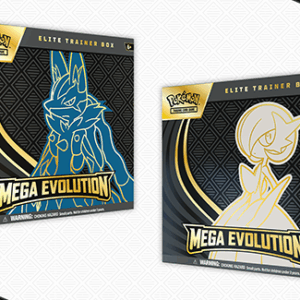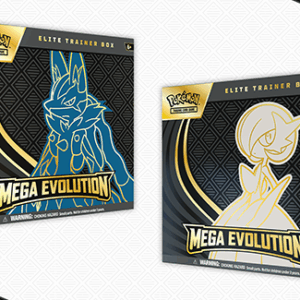In the world of Pokémon card collecting, where nostalgia and rarity often dictate value, understanding the subtle variations between card prints is akin to unlocking a hidden level in a beloved video game. Seasoned collectors often find themselves passionately discussing the nuances between shadowless and shadowed Pokémon cards, particularly those from the iconic Base Set of 1999. What makes these differences significant? Well, it’s not just about aesthetics; it’s about history, scarcity, and ultimately, value. If you’re venturing into this captivating realm or merely dusting off an old collection, knowing the distinctions and spotting a shadowless card with precision can potentially transform your binder into a treasure trove.
Picture this: It’s late 1999, the Pokémon craze has swept across lands, and kids everywhere are enamored with the thrill of ripping open booster packs. What they didn’t know was that there were waves of Pokémon card releases with slight but critical design changes. Eventually, these altered details would lead them down the rabbit hole of card rarity. When collectors talk about Base Set cards, they’re often comparing three early waves that have since etched themselves into card-collecting lore: First Edition, Shadowless, and Unlimited.
First Edition cards were the trailblazers, bearing a distinct black “First Edition” stamp. They effortlessly defined exclusivity and kicked off the craze with the shadowless aesthetic. Hot on their heels came the shadowless cards, looking almost identical to the First Edition brethren sans the stamp. Finally, as the frenzy peaked, the Unlimited series arrived, with prints being as plentiful as childhood dreams, sometimes even marked with a slight gray shadow—a design update that became synonymous with the term “shadowed.”
But what does “shadowless” truly mean in terms of card anatomy? It’s like removing all depth from a painting—early Base Set cards had a flat, no-nonsense frame around the Pokémon artwork, devoid of any gray drop shadow on the picture box’s right edge. The typeface was thinner, leaning into minimalism, and this shadowless look became iconic among collectors. However, as the cards evolved, a gentle gray shadow graced the art window’s right side, lending a 3D impression to the picture box and heralding what are now the shadowed, Unlimited prints.
The timeline flows as such: First Edition Base Set inaugurates the printing march with every card brandishing the shadowless visage. In steps shadowless sans the stamp, looking much like the First Edition but barer. Unlimited, the grand print run, morphs into the shadowed realm, becoming the most familiar format pressed in far greater numbers. These variations not only depict design choices but hint at print order and relative scarcity. Thus, the intrigue for collectors isn’t misplaced; the pursuit of shadowless cards often involves chasing higher values than their Unlimited counterparts, particularly for beloved icons like Charizard, Blastoise, and Venusaur. This allure has graders specifically labeling shadowless cards, an appellation that can substantially hike a card’s market standing.
Collecting cards from this era becomes a trained skill of visual detection. Take the frame surrounding the picture; a shadowless card features a stark, flat frame unadorned by the telltale gray shading. Move to the “HP” and font; shadowless cards sport a thinner red “HP” with tighter spacing, whereas shadowed cards flash a bolder, wider font. Even the card’s ink comes into play—shadowless iterations boast lightly colored yellow borders and softer ink tones compared to the slightly more saturated Unlimited prints. Similarly, in the evolution box and attack text, shadowless cards flaunt finer lines and text, whereas Unlimited cards assert a heavier presence.
The minutiae don’t stop there. The copyright line on shadowless cards offers another clue, usually exhibiting a compact multi-year Nintendo, Creatures, and GAMEFREAK credit. Unlimited cards tweak this layout slightly, offering subtle spacing differences that eagle-eyed collectors can discern, though they add complexity given factors like lighting or card wear.
For those specializing in holographic cards, it’s worth noting that shadowless foils can sometimes display a marginally different texture or a less vibrant surface pattern compared to Unlimited copies. This distinction often becomes blatant when contrasting both card types side by side.
Understanding pack and box origins can also aid the collector. Shadowless cards were birthed from Base Set boxes and packs that had a brief life on retail shelves, as opposed to the longer-lasting shadowed packs. Some sealed collectors even venture into tracking these card runs through box art and seal styles, diving headfirst into a fervently intriguing sub-discipline.
Take practical examples. Charizard, perhaps the most sought-after Pokémon card, appears in First Edition as shadowless with its trademark stamp. Strip away that stamp, and the shadowless version becomes a rarity unto itself, markedly scarcer than the ubiquitous shadowed Charizard many children came to cherish. Machamp, another example, makes distinguishing easy since 1st Edition Starter Sets boasted a shadowless Machamp, unlike its shadowed later versions.
Even Trainer cards or basic Energy versions from shadowless batches lack the picture-box shadow and employ the whispered type font. Because of this, binders often showcase a delightful blend of shadow influences, depending on how they were assembled.
From this journey into card rarity, one gleans why card condition becomes paramount—these shadowless gems, collected in a bygone era, often bear the battle scars of schoolyard showdowns. Their lighter borders also amplify any nicks or dings. Thus, grading demands a meticulous inspection crown light and care. Corners, surfaces, and holos deserve the white glove treatment, and when slabbed, shadowless labels earn their merit in the marketplace, illuminating both provenance and prestige.
Yet, collectors must be wary of rampant misunderstandings. Shadowless only applies to Base Sets, separate from subsequent series like Jungle or Fossil. Also, don’t let your eyes deceive you with UK variants boasting a “1999-2000” copyright—they still belong to the shadowed category. And while there’s a debate over a thick versus thin First Edition stamp, that discourse doesn’t translate here.
For those needing a handy checklist, here’s a quick way to identify shadowless cards: Inspect the art window’s right side for absence of the gray bar, scrutinize “HP” font for thin and close type, observe overall ink for lighter tones, and always check the set era—remember, shadowless is a Base Set specialty. If assessing holos, contrasting with a known shadowed example can highlight pronounced differences.
As far as pricing tiers go, they generally adhere to this hierarchy: the heralded First Edition Base Set commands the highest; shadowless holds a robust second place with strong premiums on top-tier cards; followed by Unlimited, which, while more common, still delivers value in pristine grading for Charizard, Blastoise, Venusaur, and notable trainers.
For those tasked with decoding a childhood treasure trove, set aside any card with that unmistakable flat art box. With practice, spotting the missing shadow becomes second nature, and before long, your collection will self-organize into a chronicle of Pokémon history, woven with narratives of scarcity and collector brilliance.






